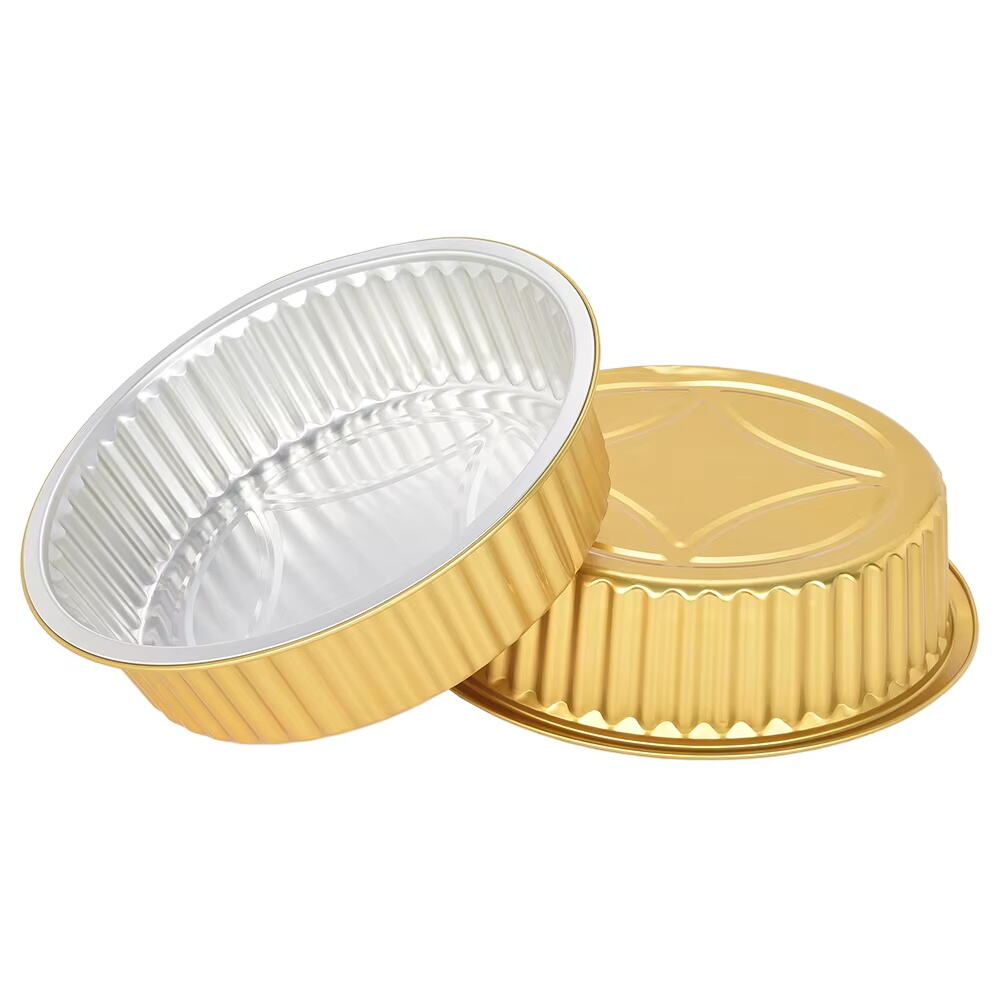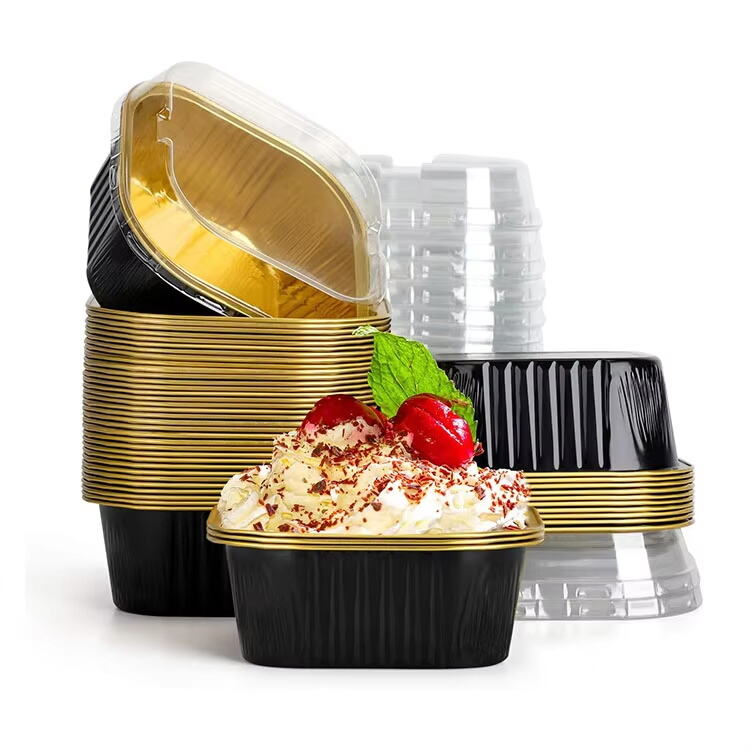Introduction to Aluminium and Plastic Food Containers
Food packaging has changed quite a bit through the decades, and today most folks see aluminium and plastic containers as the main contenders in this space. These two materials serve very different purposes across the food sector. Take aluminium containers for example they're gaining traction fast because they keep food fresh longer thanks to their excellent barriers against light, moisture and air, plus they can be recycled multiple times without losing quality. On the flip side, plastic remains everywhere from restaurant kitchens to home pantries simply because it's so versatile and cheap to produce. The growing green movement is definitely shifting how people think about which material to choose. Restaurant owners now weigh factors like environmental impact versus upfront costs when deciding what kind of containers to stock up on for daily operations.
Durability and Practical Performance
Strength and Structural Integrity in Extreme Conditions
Aluminum containers really stand out when facing tough conditions without losing their shape. These containers keep their form even when heated up in the oven, so they work great for baking or warming leftovers. Plastic containers tell a different story though. Most will start to warp once they hit certain temperatures, sometimes melting right on the counter after coming out of the microwave. Real world testing backs this up too. Labs found aluminum holds up way better than plastic during rough handling situations like dropping or stacking heavy items on top. That's why so many people turn to aluminum for storing things in garages, workshops, or anywhere else where regular plastic just wouldn't cut it over time.
Heat Resistance: Oven vs. Microwave Safety
Aluminum containers handle heat pretty well, which is why many people use them in ovens without problems. Most can take pretty high temps as long as we don't go beyond what the manufacturer says. That's why these containers work great for so many different cooking jobs from roasting veggies to baking casseroles. Plastic tells a different story though. Some types actually release bad stuff when heated up, something that doesn't happen with aluminum at all. And let's face it, not every plastic container plays nice in microwaves either. We've all seen those moments where plastic starts to warp or worse, lets chemicals seep into our food. Reading labels carefully before heating anything in plastic remains crucial for anyone wanting to stay safe while cooking.
Reusability and Long-Term Wear
When thinking about food storage solutions, how many times something can be used matters a lot for both green living and saving money at the same time. Aluminum containers really shine here because they last through countless trips to the fridge or freezer without breaking down much. Plastic tends to get scratched up and warped after just a few washes, which makes them less reliable eventually. People who want to cut down on trash while keeping expenses low will notice this difference pretty quickly. Over months and years, not having to buy new containers all the time adds up financially. Anyone looking for something that works well now and continues working for years into the future should probably go with aluminum instead.

Food Safety and Health Implications
Chemical Reactivity and Leaching Risks
Knowing how different materials react chemically and what happens when they come into contact with food is really important for keeping our meals safe. Plastic containers, specifically ones that have BPA or phthalates in them, tend to release dangerous substances over time which can be bad for health. On the other hand, aluminum containers generally don't let much metal escape into food unless we're talking about something super acidic like lemon juice or vinegar. These differences matter a lot when picking out storage options. Studies show that making smart choices about packaging helps reduce potential health problems, so it pays off to think carefully about what kind of containers we actually put our food in day to day.
Toxin Migration in Plastic vs. Aluminium
Research shows that heating certain plastic containers causes toxins to migrate into food at concerning levels. Aluminum containers tend to be much safer in this regard since they don't release as many harmful substances when heated. For people who care about what they eat, understanding this difference matters a lot when choosing storage options. Switching to aluminum food containers actually makes food safer and reduces potential health problems. Plus, it's just common sense really. Choosing aluminum isn't just good for our health but also better for the planet overall.
As we transition into considerations of durability and practical performance, it's essential to understand how these aspects influence your decision-making regarding food packaging materials. We need to ensure that containers not only safeguard food but also adhere to sustainable practices.
Environmental Impact of Aluminium Food Containers vs. Plastic
Recycling Efficiency and Circular Economy Potential
Aluminum food containers recycle much better than plastic ones, making them a greener choice overall. What makes aluminum so special? Well, when we recycle aluminum, it keeps all its good qualities even after multiple cycles through the system. This saves loads of energy compared to producing new material each time. Plastic isn't doing so well in this department. Most plastic ends up in landfills because only about 9% actually gets recycled according to recent studies. The environmental impact here is huge. Aluminum stands out as a real winner for building that circular economy everyone talks about these days. Instead of just throwing things away, we could be reusing materials over and over again. For manufacturers looking to cut costs while being responsible, focusing on aluminum recycling programs makes perfect business sense too. It helps push us toward fewer single-use plastics in our daily lives.
Energy Consumption in Production Cycles
Making aluminium does take quite a bit of energy upfront, but what makes it stand out is how easily it can be recycled again and again, cutting down on energy needs across many manufacturing runs. Plastic products might seem better at first glance since they generally need less energy during production, yet they create major problems later on because most won't break down naturally and only a small fraction actually gets recycled properly. Research into material sustainability consistently shows that aluminium comes out ahead in energy efficiency over time, which explains why more companies are switching to aluminium containers for food storage these days. When looking at environmental effects, nobody should ignore the full picture of how much energy goes into making something from start to finish.
Landfill Persistence and Microplastic Concerns
Aluminum food containers aren't completely biodegradable but they do break down much faster in landfills compared to plastics, particularly if they get properly recycled. Plastic items on the other hand stick around for centuries. This long lasting nature of plastic has created a big issue with microplastics getting into our environment. Studies show these tiny plastic particles are making their way up the food chain and could be harmful to people's health over time. We really need to tackle what happens to all this garbage in landfills if we want to make progress on environmental issues. Cutting back on plastic waste while improving aluminum recycling programs seems like a solid strategy for creating better environmental results in the long run.

Cost Analysis and Value Considerations
Upfront Pricing and Bulk Purchase Economics
The price tag on aluminium food containers tends to run higher than plastic ones right from the start. For small restaurants or catering companies buying in volume, this extra expense upfront can really eat into budgets. Plastic options generally cost less per unit when purchased in large quantities, which explains why so many operators go for them just to save money initially. But there's another side to this story worth considering. When we look beyond the first purchase, aluminium containers stand out because they last much longer and can actually be used again and again. A good quality aluminium container might survive hundreds of cycles through a commercial kitchen before needing replacement, while most plastic equivalents get tossed after just one or two uses. Businesses that factor these long term benefits into their purchasing decisions usually find themselves saving money down the road. Plus, choosing durable materials helps cut waste and supports greener operations in the food service industry.
Long-Term Savings from Reusability
Switching from plastic to aluminium containers often pays off in the long run. These metal containers last much longer and can be reused multiple times, cutting down on trash disposal costs that really eat into company profits. With more people now caring about environmental issues, businesses that go for reusable options aren't just saving money but actually meeting what customers want these days. Take restaurants that have switched to aluminium takeaway containers - they report saving thousands annually on waste fees alone. The financial benefits are clear, but there's another angle too. Companies that embrace this approach typically see lower garbage bills while building a greener reputation that appeals to shoppers who care about sustainability. Many small businesses find this combination of cost savings and positive public perception makes aluminium containers worth the initial investment.
FAQ
What are the main benefits of using aluminium food containers?
Aluminium containers offer excellent barrier properties, recyclability, and durability. They are safe for high temperatures, making them ideal for cooking and reheating.
Why are plastic food containers still commonly used despite environmental concerns?
Plastic containers are versatile, cost-effective, and lightweight, leading to lower shipping costs. While they pose recycling challenges, their economical nature continues to make them popular.
Which type of food container is better for long-term savings?
Aluminium containers often prove more cost-effective over time due to their durability and reusability, despite higher upfront costs.
Are aluminum containers safe for all food types?
Yes, but care should be taken with highly acidic foods as they can cause slight leaching in non-treated aluminium containers.
What steps can be taken to improve the sustainability of plastic containers?
Improving recycling processes and developing biodegradable plastics can help reduce environmental impact.


